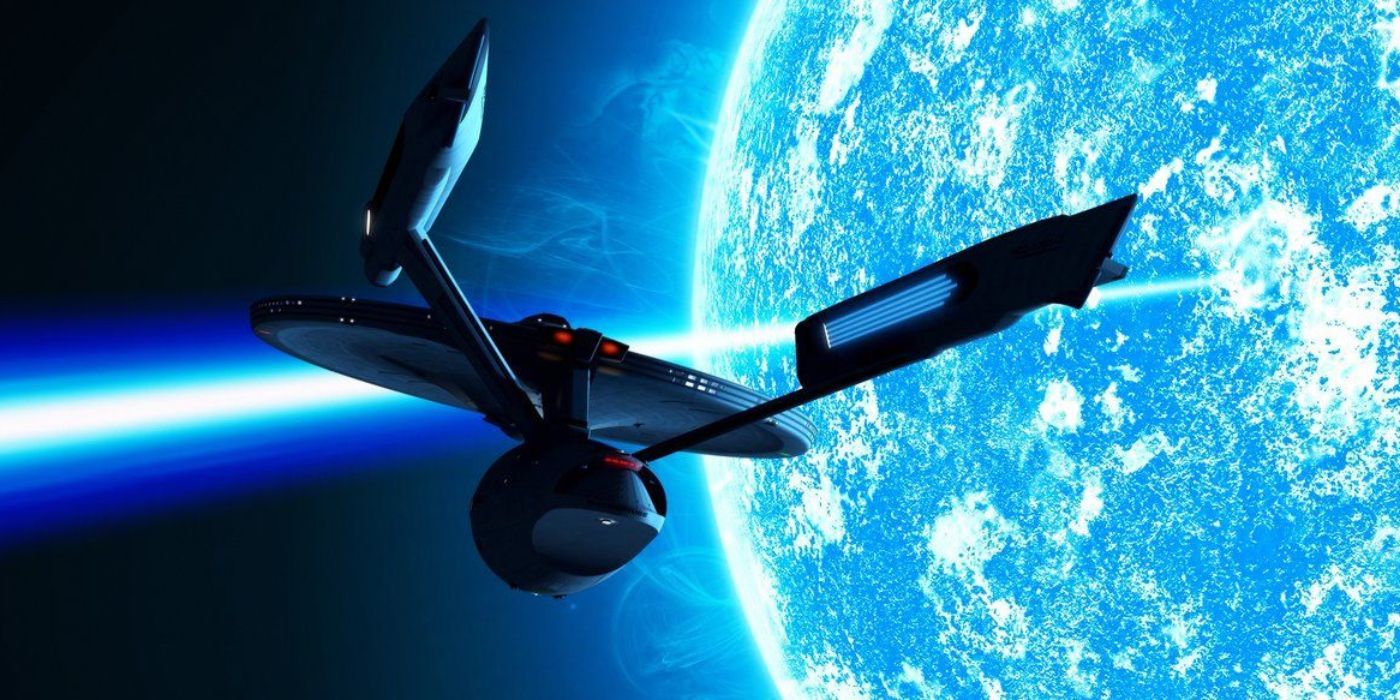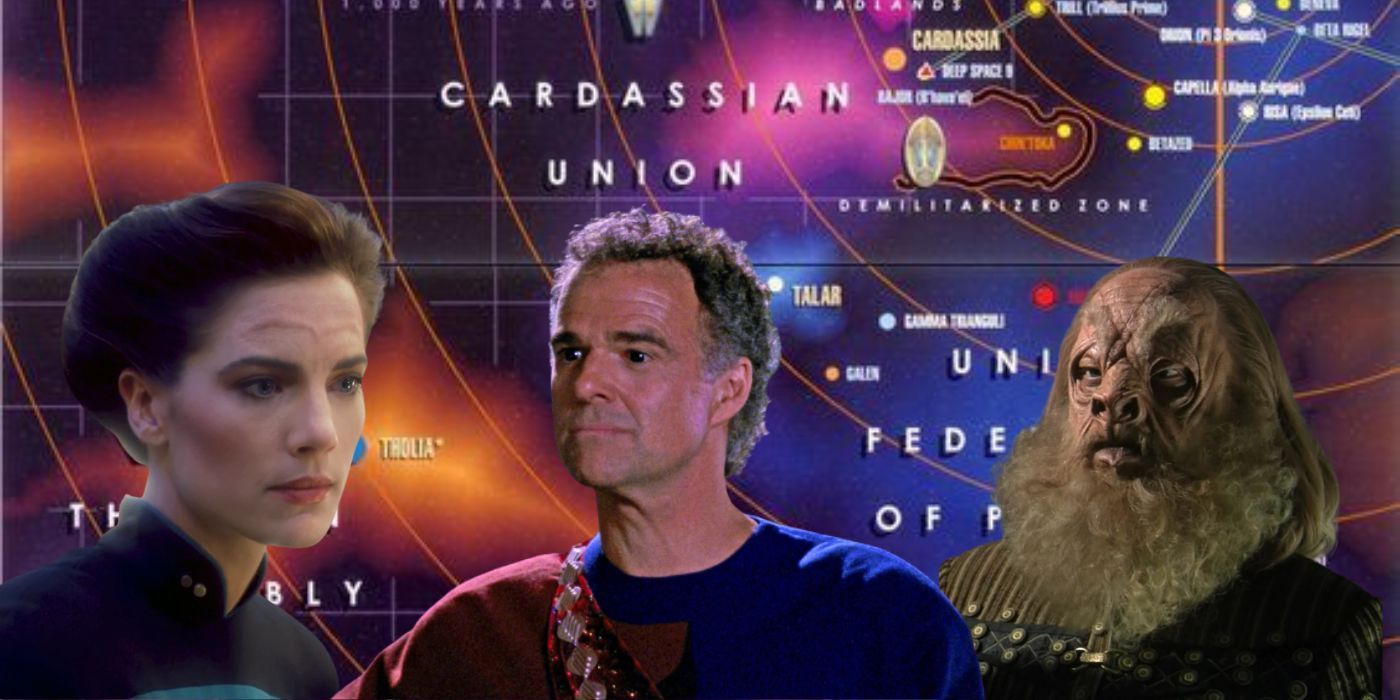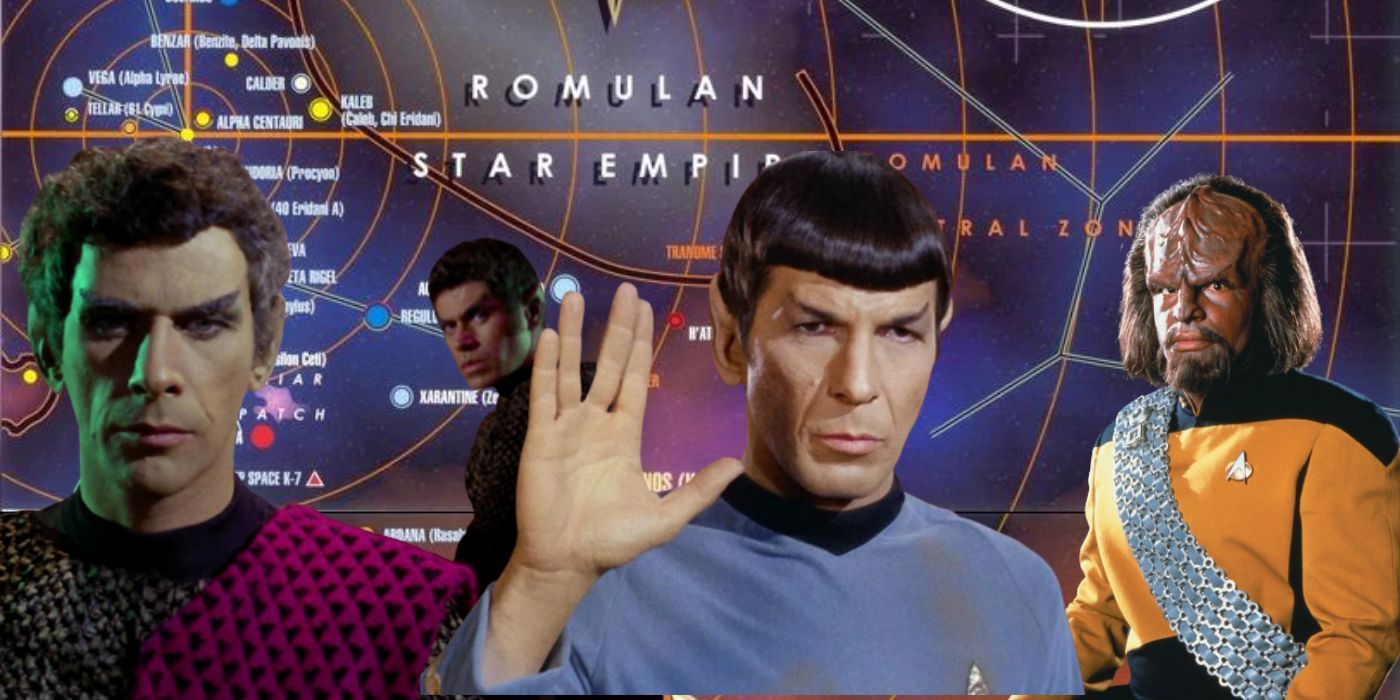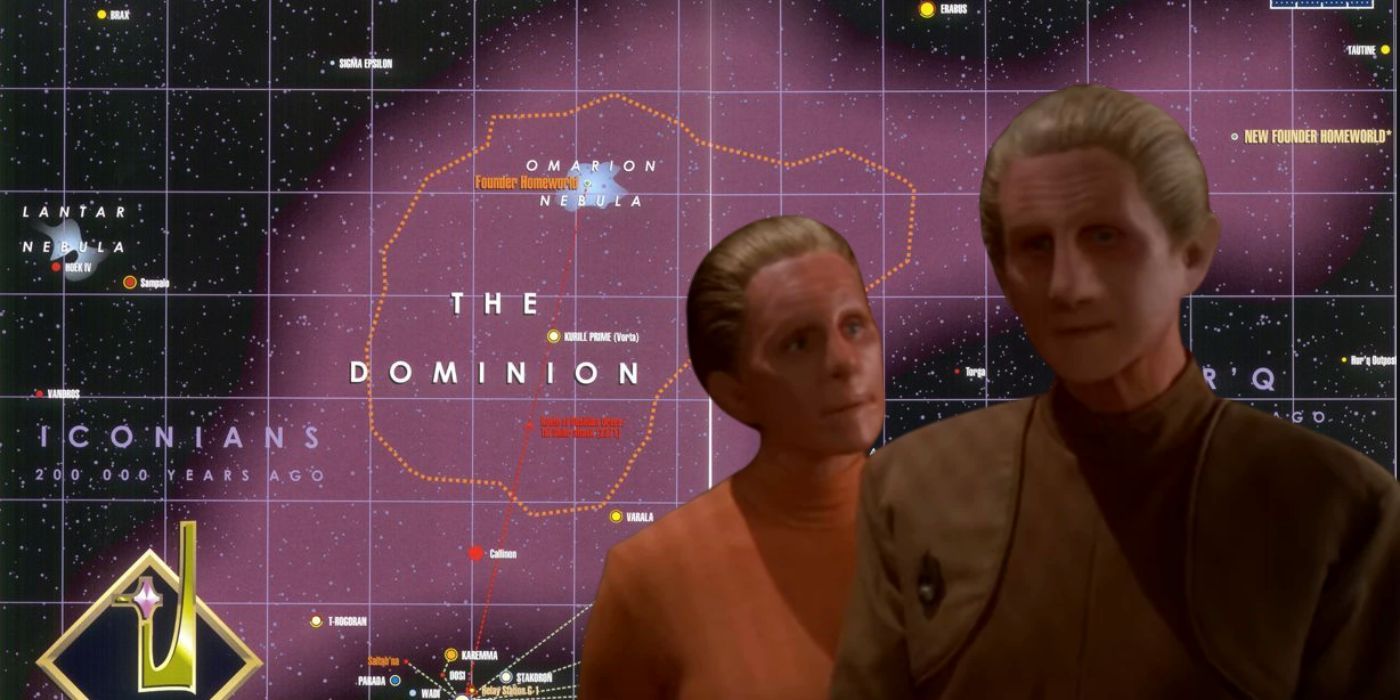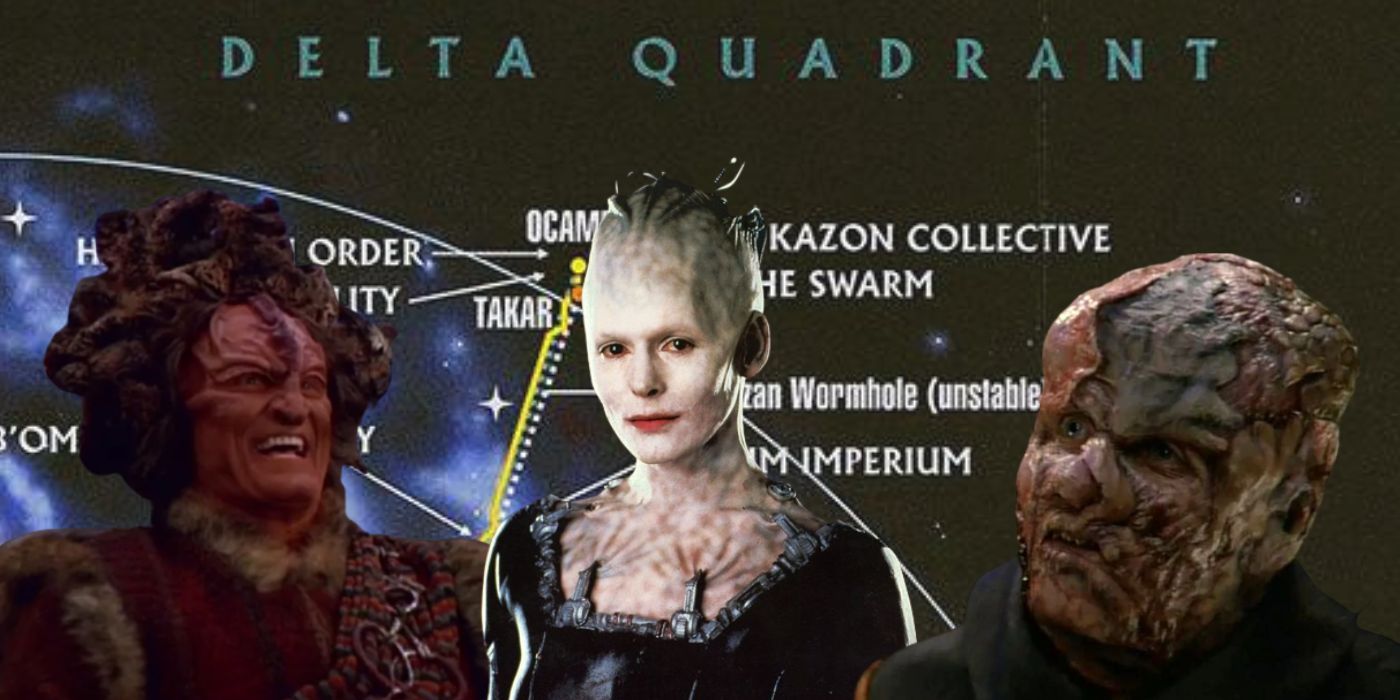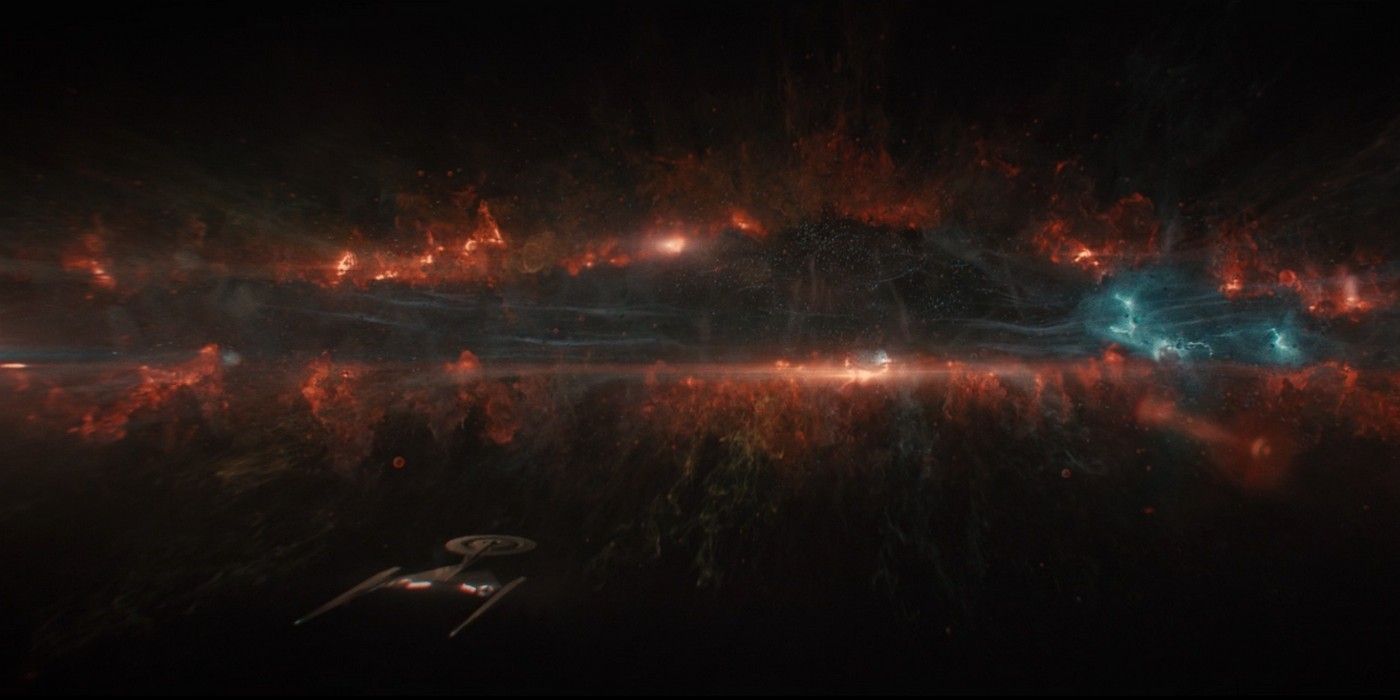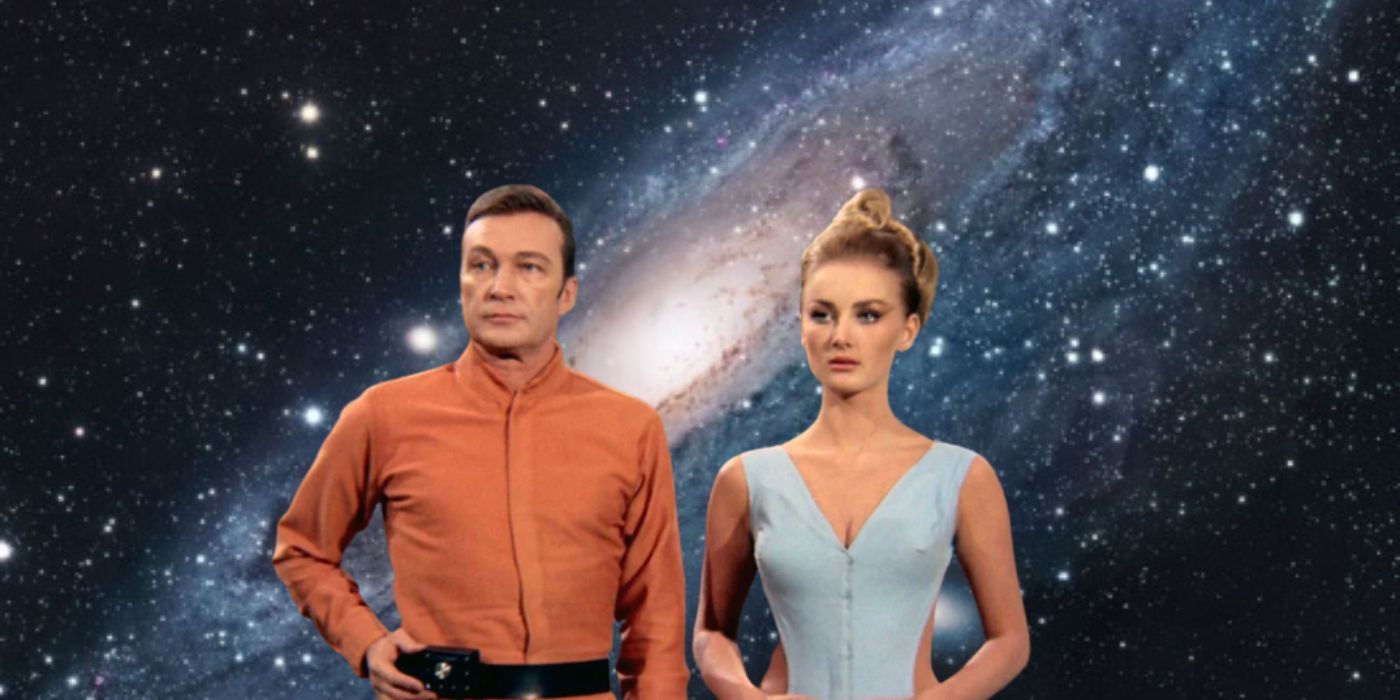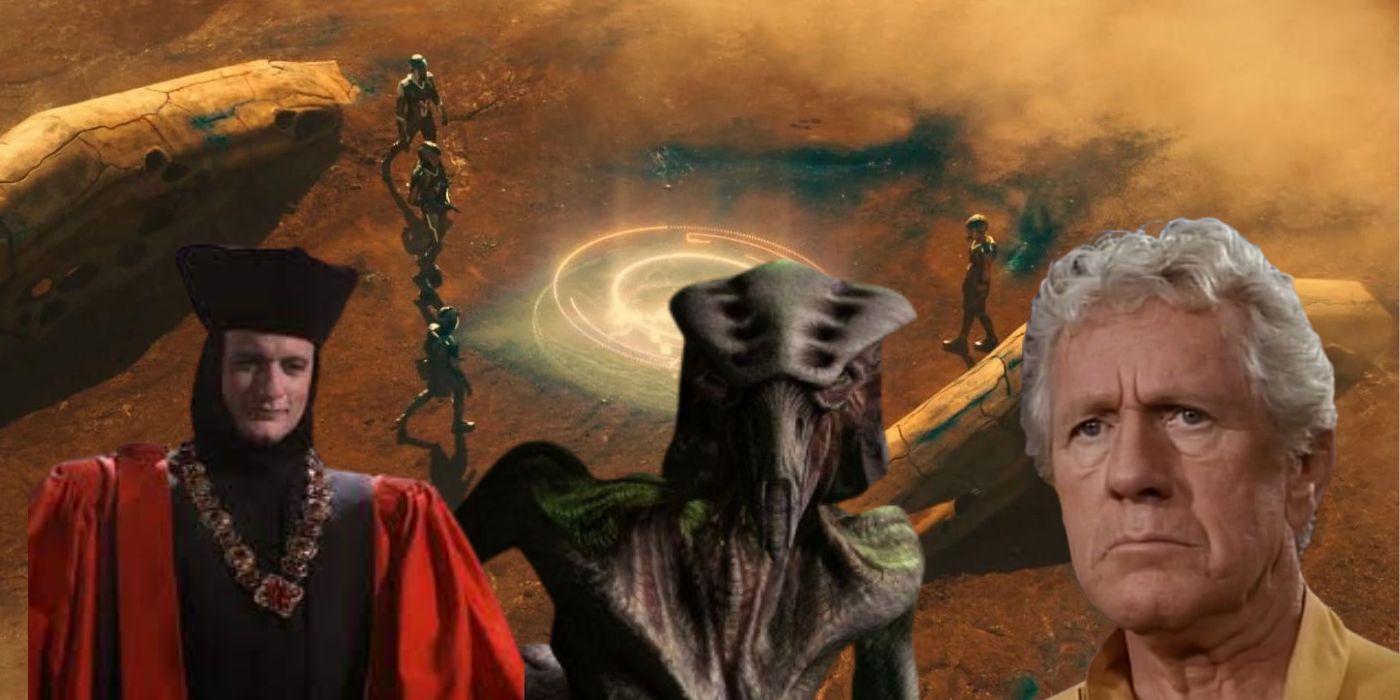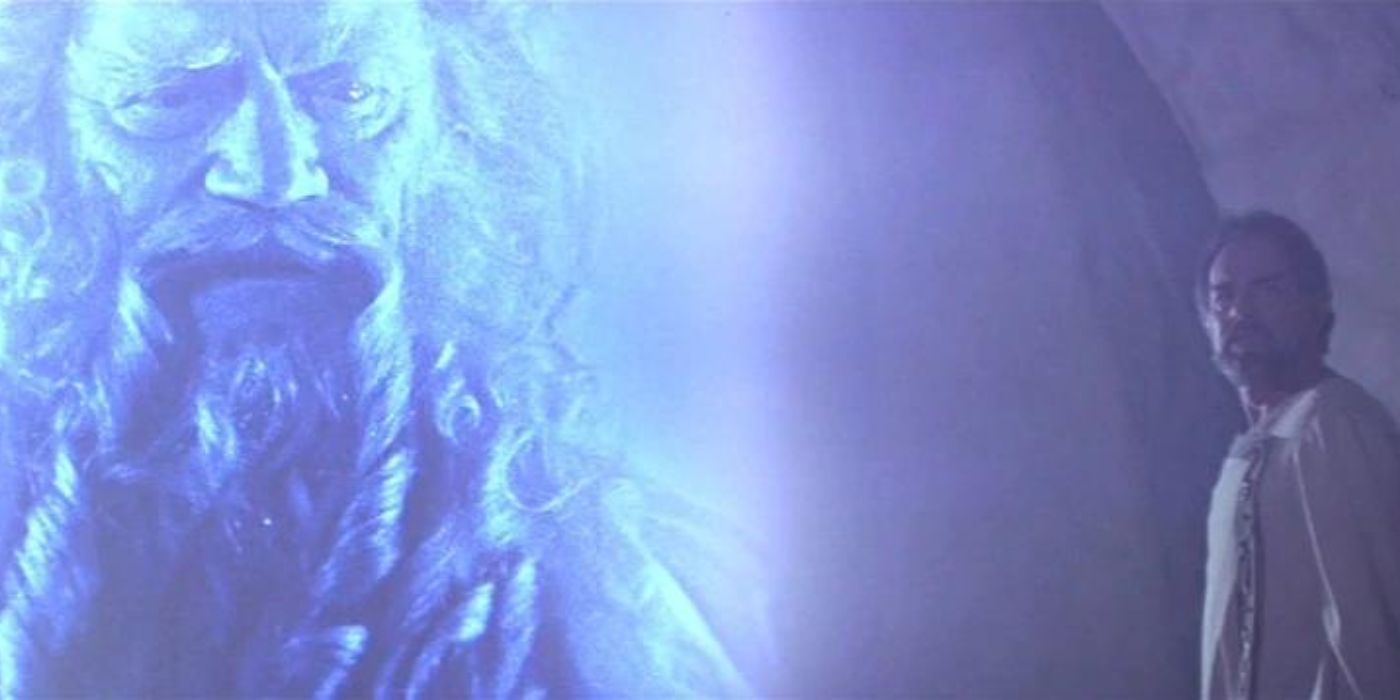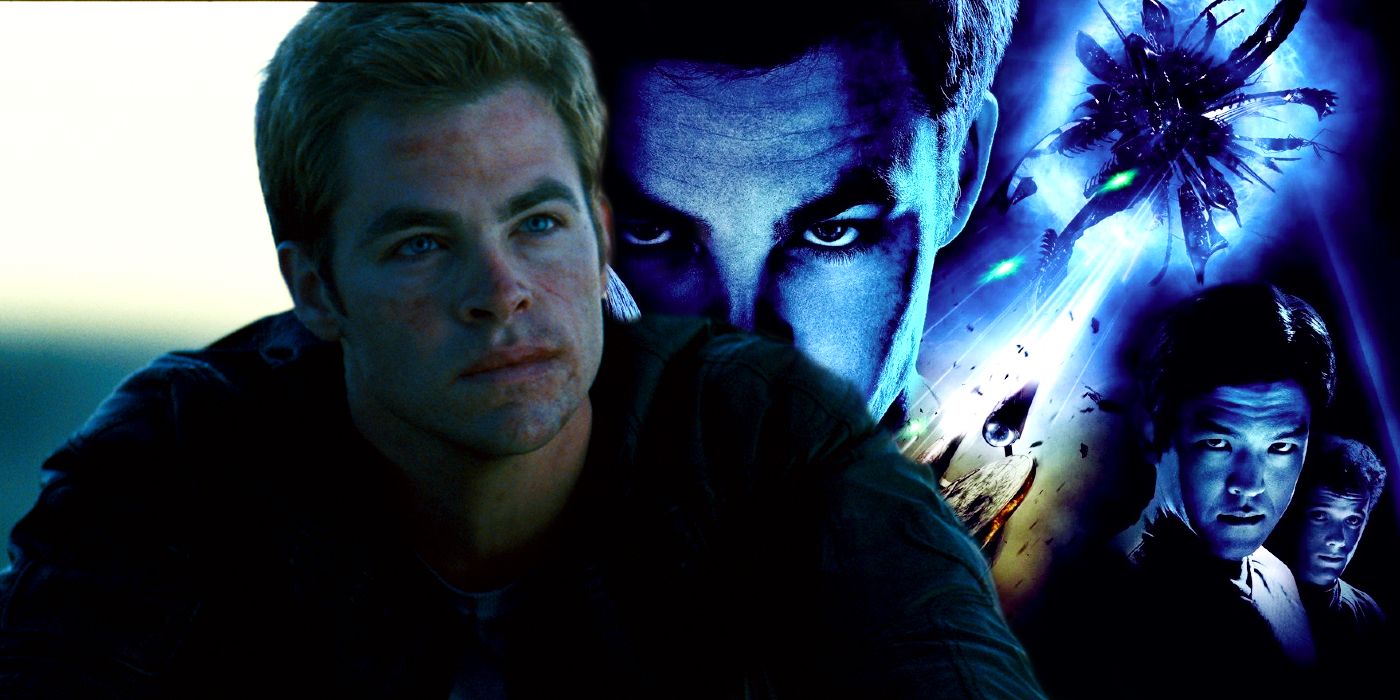Most of the action in Star Trek takes place in the real-world Milky Way Galaxy which is roughly divided into four quadrants, named after the first four letters of the Greek alphabet: Alpha, Beta, Gamma, and Delta. These are the galactic regions that include significant planets like Vulcan, Qo'noS, and of course, Earth. While Gamma and Delta still bear planets with ominous origins, the Alpha and Beta Quadrants are perhaps touched upon the most within the Star Trek mythos. Despite this common division, The Next Generation also referred to a new quadrant known as Morgana. But not much is known about this certain quadrant as it is not mentioned any further.
Even beyond the Quadrants, ardent Star Trek fans can spot the Galactic Barrier and several other celestial objects that are present in other galaxies like the Andromeda Galaxy (yet another real-world phenomenon) that are still yet to be explored more by the franchise's protagonists. While most of these galactic quadrants can be seen as astronomical phenomena rooted in scientific explanation, the mythos can also incorporate near-godly beings like the Sha Ka Ree in regions such as the so-called "Great Barrier." The two Barriers carry within them such heavenly mysteries that deserve explanations of their own.
TOS Invented Star Trek's Best Time Travel
Alpha Quadrant
The Star Trek galaxy explained that the Alpha Quadrant contains more than 60 home worlds, and this includes Captain Kirk's home planet Earth itself (which Trekkers would call Terra or Sol III). Other major planets include the Tellarite native planet Tellar Prime, Trill, which houses both the eponymous humanoid species and the non-humanoid Trill symbionts, and Betazed, which is inhabited by the Betazoids, a humanoid species that boasts warp-capable space vessels. Even though the majority of territories under the Klingon Empire and Romulan Star Empire fall in the Beta Quadrant, the two forces join the United Federation of Planets and the Cardassian Union to constitute the four great powers in the Alpha Quadrant in the late 24th century.
Beta Quadrant
The Star Trek galaxy explained that apart from the Romulans and the different versions of the Klingons, the Beta Quadrant's highlight is Vulcan, the native planet of Spock and other members of the Vulcan species. Multiple Star Trek encyclopedias suggest that Vulcan is located in a Sector of the same name within the Beta Quadrant. The 2002 publication Star Trek Charts also estimates Vulcan's exact position to be somewhere in the 40 Eridani star system that really exists 16.3 light years from Earth's Sun. Much like Spock, the inhabitants of Vulcan can be identified with their raised eyebrows and pointy ears. Mostly devoid of emotions, the Vulcans are known for leading a life on the basis of logic and reasoning.
The Klingon homeworld Qo'noS and the Romulan Empire's native planet Romulus also fall under this galactic quadrant. The former has a chaotic weather system with frequent thunderstorms and a rocky landscape characterized by numerous dormant volcanoes and caves. The native warrior species of Klingon are bound by their martial traditions and value honor in combat. As for Romulus, the planet served as the second home for Romulans ever since they migrated from Vulcan. The biological cousins of the Vulcans, they had to move back to their original homeworld after Romulus' sun exploded in 2387. According to The Next Generation, Risa is also a part of this quadrant. Known as the pleasure planet, Risa is known for its sexually liberated culture.
Gamma Quadrant
The Star Trek galaxy explained that the Gamma quadrant includes several Star Trek planets such as Brax, Yadera, Meridian, and others. As seen in Deep Space Nine, the Quadrant also houses the Dominion, an aggressive ensemble of several alien species commanded by the shape-shifting Changelings (AKA the Founders). Several territories of the quadrant are under the Founders' control even though they have had only two home worlds. The first home world of the Founders was a rogue planet that housed the Founders who were, at that time, escaping prosecution from the "solids" (how they referred to non-shape shifters). By 2372, the Founders shifted to a second home world.
Delta Quadrant
The Star Trek galaxy explained that Star Trek: First Contact confirms the origin of the Borgs from Delta but doesn't name their home planet. This is the case for many other species of Delta, a quadrant that is relatively unexplored by the United Federation. Only Voyager offers the most details about the planets within the quadrant. Delta is also known as the domain of antagonistic species like the Borgs, the Kazon, and the Vidiians. The cybernetic Borgs are mostly linked through a hive mind known as the Collective. As for the Kazon, they are nomadic in nature which makes it difficult to trace their planet. Vidiians are similarly migratory and sport-scarred faces as a result of the terrible Phage pandemic.
The Galactic Barrier
The Star Trek galaxy explained in the original series what is known as Star Trek's Galactic Barrier. In the subsequent years, Trekkers have called it by many names ranging from Great Barrier to the Energy Barrier, but there is still much debate and discussion regarding the origin of this energy field that surrounds the Milky Way Galaxy. The origins behind its creation are still hotly debated so it is uncertain whether the Galactic Barrier was created by a natural process or by artificial means. Most of the conventional spaceships that have tried crossing this barrier in the Star Trek universe have often been destroyed with the crew even gaining psychoactive traits while nearing the barrier.
The Andromeda Galaxy
Progressive exploration of the Star Trek galaxy explained that the Milky Way Galaxy is definitely not the final frontier, as several other galaxies lie beyond it, such as the Andromeda Galaxy. This serves as a home for the planet Kelva, the capital of the Kelvan Empire. The Kelvans are highly intelligent shapeshifters. Because of their intellectual superiority, the Kelvans feel that it is their duty to rule over other species. The same galaxy also includes the humanoid species simply known as the Makers, creators of service robots and outposts in both the Andromeda and Milky Way Galaxy. The outposts were a residential necessity given how a supernova had destroyed their homeworld.
The Extragalactic Species
The Star Trek galaxy explained that the spanning areas of planets and species that border Star Trek's Galactic Barrier from the galaxies beyond the Milky Way are still vague in Star Trek canon. Still, some information has been obtained on a few humanoid and non-humanoid extragalactic species. Species 10-C is a major case in point. A highly-advanced non-humanoid race with members much larger than humans, the species is responsible for creating the heavily destructive Dark Matter Anomaly. With their bodies adapted to float in gas layers, Species 10-C belong to a homeworld near the Galactic Barrier. Other such examples of extragalactic species include the "space amoeba" Nacene, the physically fragile Ornithoid, and immortal races like the Q and the Douwd.
The Center Of The Galaxy
Star Trek V: The Final Frontier reveals the presence of the mythological planet Sha Ka Ree right at the center of the galaxy that doesn't fall under any quadrant. An equivalent of the concept of heaven, Sha Ka Ree is regarded in Vulcan mythology as the realm of all creation. But owing to humankind's fear of exploring the unknown and the second Galactic Barrier, the exact physical nature remains unexplored and is regarded as a mythical entity. It goes to prove how the mysteries of Star Trek's chief galaxy don't just go beyond its exterior but its very core too.
Multiple Alternate Realities And Timelines
Not only is there several quadrants, but the Star Trek galaxy explained that there are also several alternate timelines in the franchise's world. In the Paramount+ series Picard, there is an alternate reality that completely rewrites Star Trek's history. The movies, from the original series to the Next Generation, take place in what is known as the Prime Universe. The J.J. Abrams movies take place in what is known as the Kelvin Timeline.
Abrams showed this in his movies by having the Kelvin Timeline Spock meet a Spock from a different timeline. This allowed Star Trek to move on with any story it wanted to tell by explaining the characters are from different timelines with new and fresh histories. There is also a Mirror Universe, an alternate timeline ruled by the fascist Terran Empire instead of the Federation. With so many quadrants, they all likely ended up very different in each timeline, making the Star Trek stories endless.

